Asymptomatic Plasmodium falciparum infection in children is associated with increased auto-antibody production, high IL-10 plasma levels and antibodies to merozoite surface protein 3
- PMID: 25889717
- PMCID: PMC4419484
- DOI: 10.1186/s12936-015-0658-7
Asymptomatic Plasmodium falciparum infection in children is associated with increased auto-antibody production, high IL-10 plasma levels and antibodies to merozoite surface protein 3
Abstract
Background: Mechanisms of acquired protection to malaria in asymptomatic Plasmodium falciparum carriers are only partially understood. Among them, the role plays by the self-reactive antibodies has not been clarified yet. In this study, the relationship between repertoires of circulating self-reactive and parasite-specific immunoglobulin G (IgG), their correlation with cytokine levels, and their association with protection against malaria was investigated in asymptomatic Plasmodium falciparum-infected Gabonese children.
Methods: The diversity of P. falciparum-specific antibody repertoire was analysed using a protein micro-array immunoassay, the total auto-antibody repertoire by quantitative immunoblotting and circulating cytokine levels were measured by ELISA in endemic controls (EC) and P. falciparum-infected children from Gabon with asymptomatic (AM) or mild malaria (MM). The association of self- and parasite-specific antibody repertoires with circulating cytokines was evaluated using single linkage hierarchical clustering, Kruskal-Wallis tests and Spearman's rank correlation.
Results: Children with AM exhibited an IgG response to merozoite surface protein 3 (MSP3) but not to MSP1-19, although their levels of total P. falciparum-specific IgG were similar to those in the MM group. Moreover, the asymptomatic children had increased levels of autoantibodies recognising brain antigens. In addition, a correlation between IL-10 levels and parasite load was found in AM and MM children. These two groups also exhibited significant correlations between plasma levels of IL-10 and IFN-γ with age and with total plasma IgG levels. IL-10 and IFN-γ levels were also associated with auto-antibody responses in AM.
Conclusions: Altogether, these results indicate that a self-reactive polyclonal response associated with increased IgG to MSP3 and high plasma levels of IL-10 and IFN-γ may contribute to protective immune mechanisms triggered in asymptomatic P. falciparum infection in Gabonese children.
Figures
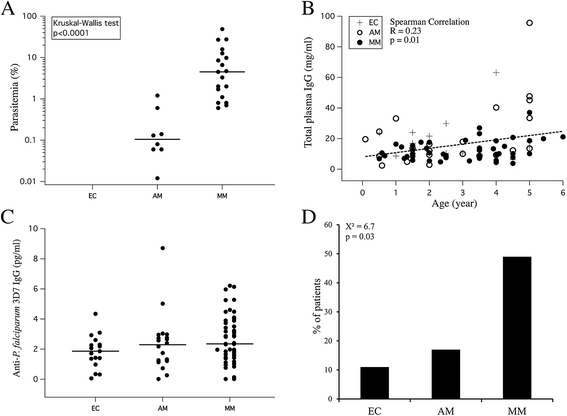
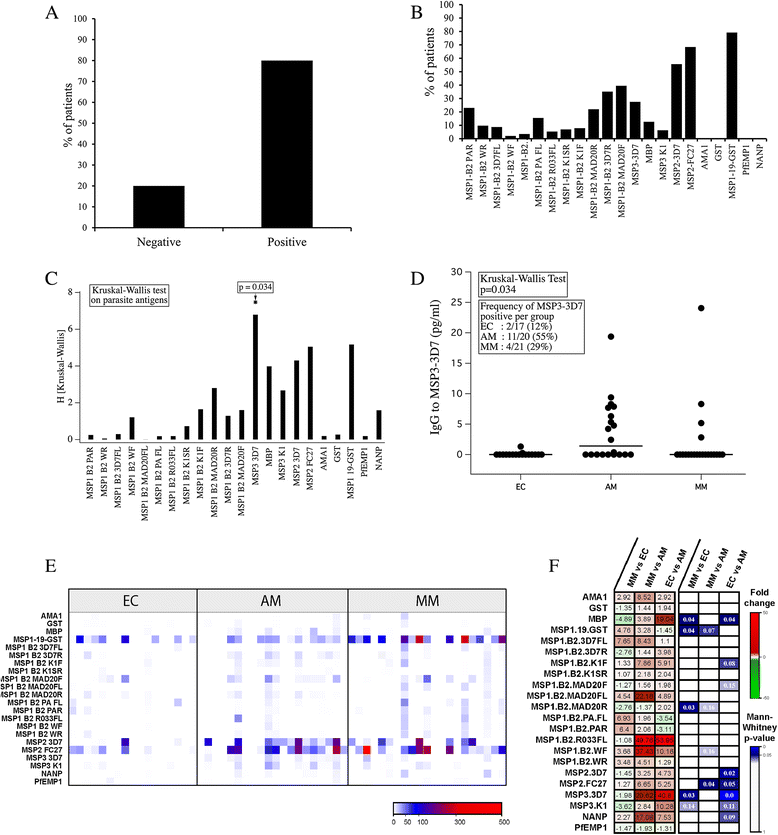

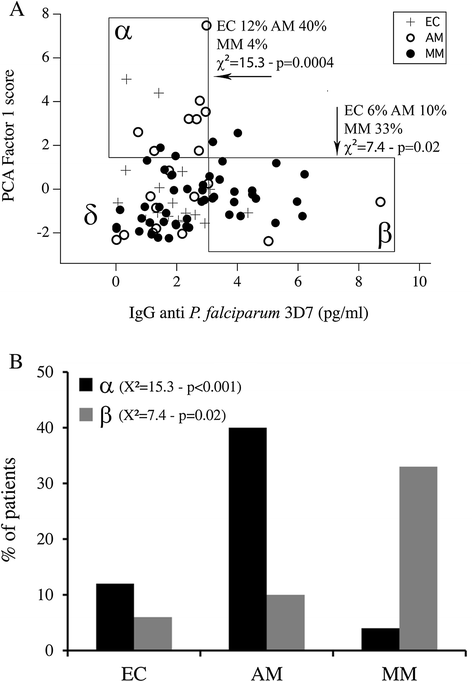
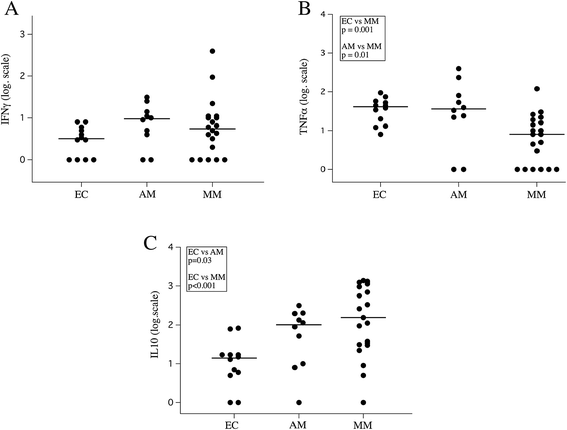
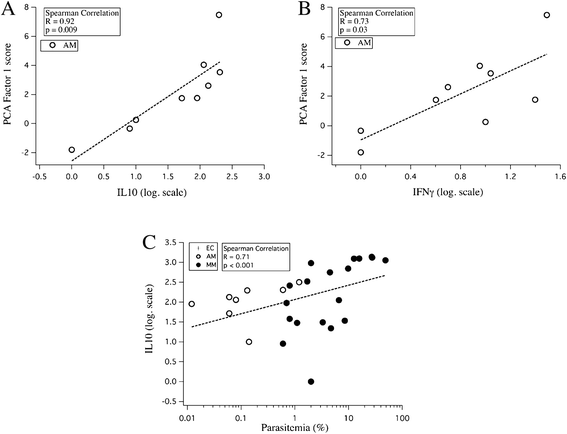
References
Publication types
MeSH terms
Substances
LinkOut - more resources
Full Text Sources
Other Literature Sources

